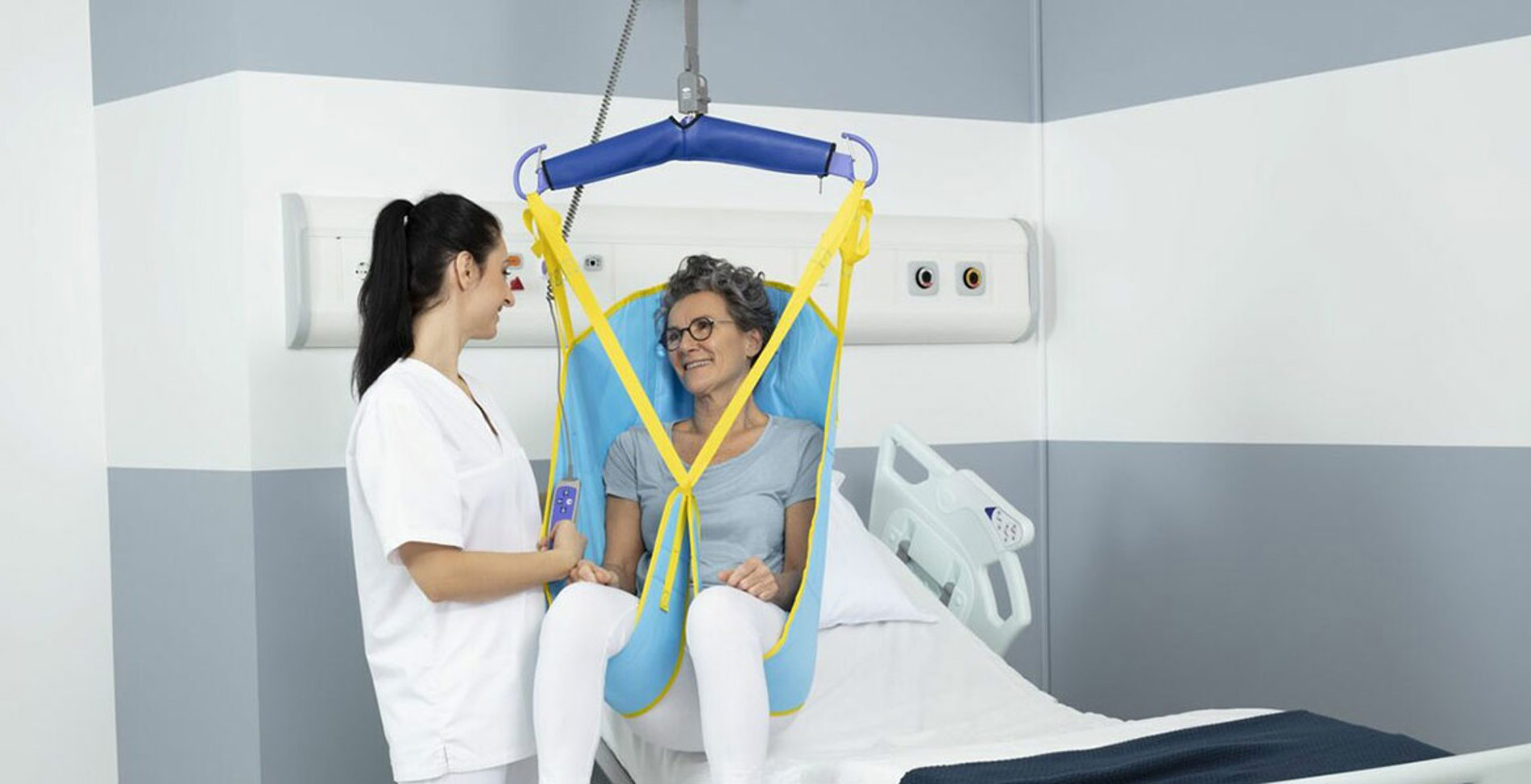Ceiling lifts – A safe patient handling solution
Ceiling lifts provide a multitude of benefits to the healthcare facility as a safe patient handling solution. Take a look at several examples below that are supported by clinical documentation.

Quality of patient or resident care, safety, satisfaction
- Use of safe patient handling mobility technology positively influences the quality of patient or resident care, mobilization, rehabilitation and daily lift1
- All patients felt safe during ceiling lift transfers, and felt ceiling lifts to be safer and less strenuous for staff2
- Patient overall satisfaction with ceiling lift transfer scored an average of 8.5 (score from 1–10)2
Lower fatigue, pain and ease of use
- Ceiling lift use is associated with lower caregiver fatigue, pain and frustration3
- Caregivers have reported that the introduction of ceiling lifts made it easier to lift residents4
- 96% of the staff reported that the introduction of ceiling lifts had made their job easier to perform4
- Transferring a patient using a ceiling lift was perceived by staff to be less difficult, more efficient, easier-access and lower injury risk, compared with floor lifts (p≤0.001)5
Good investment, increased productivity
- Investment in ceiling lifts can be recouped within 2–6 years6
- Economic benefits due to reduced compensation costs can be generated within 3 years7
- Ceiling lifts enable a single caregiver to transfer patients or residents smoothly without any manual lifting. They are installed, stored and operated so they are always in place, but never in the way
Arjo is a leader in safe patient handling and ceiling lifts. Learn more about how Arjo can provide you with recommendations and see our Architect’s Web Portal.
References:
- Mary W. Matz, MSPH, CPE, CSPHP, Patient Handling and Mobility Assessments, a white paper. FACILITY GUIDELINES INSTITUTE (2019).
- Alamgir H, et al. AAOHN J 2009; 57(9):374-380.
- Silverwood S and Haddock M. Dynamics 2006; 17(3):19-21.
- Engst C, et al. Ergonomics 2005; 48(2):187-99.
- Alamgir H, et al. Injury 2009; 40-987-992.
- Alamgir H, et al. Injury 2008; 39:570-577.
- Chhokar R, et al. Appl Ergon 2005; 36(2):223-229.